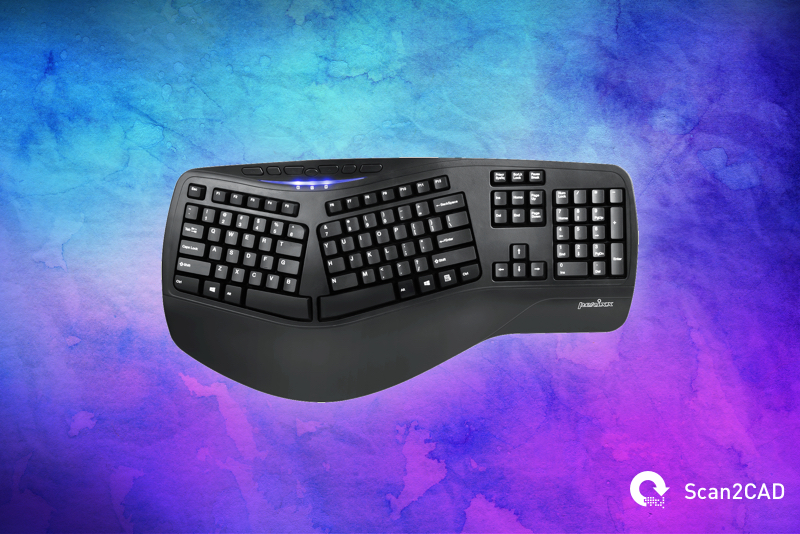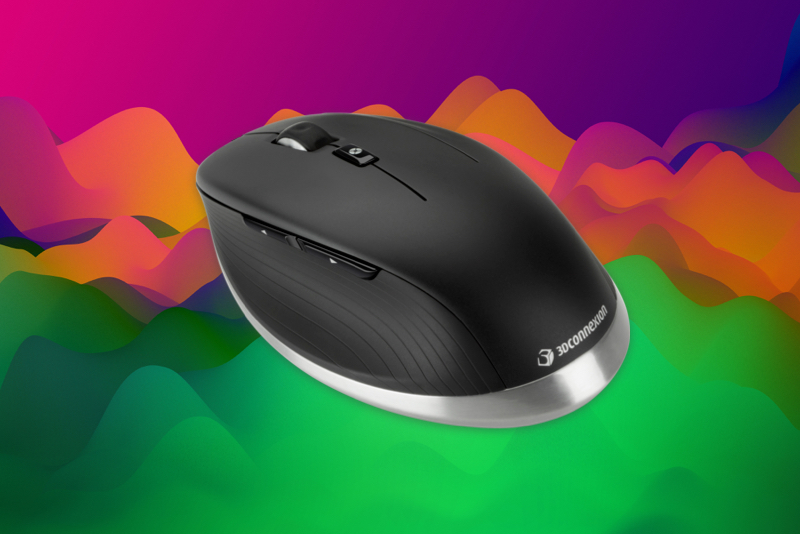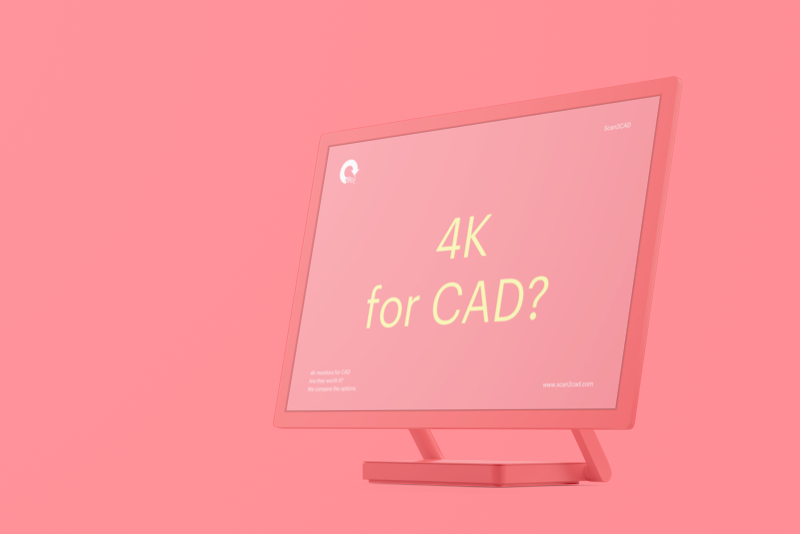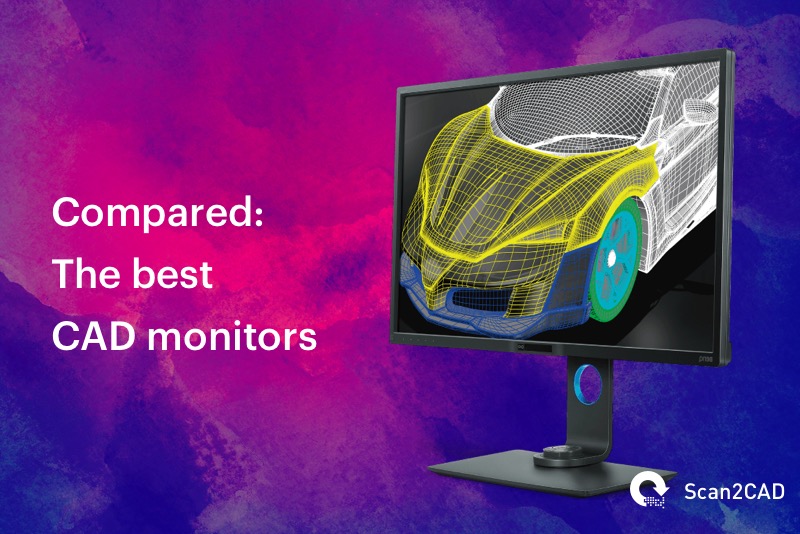Whether you work in the CAD industry or you’re a CAD hobbyist, you’ll know just how important it is that you’re working with the right tools. Something you might not have considered, however, is your keyboard. For CAD users, keyboards aren’t just a tool for typing—they’re a way to increase comfort and productivity when you’re doing what you do best. The wrong keyboard can lead to frustration and—in some cases—physical pain. Finding the right one, therefore, can be life-changing. So, where can you find the best keyboard for CAD?
Scan2CAD’s latest guide is here to give you the information you need to invest in the right keyboard for CAD. We’ll look at factors you need to consider when looking at prospective keyboards before finishing off with our top picks. Let’s get started!
The best keyboard for CAD
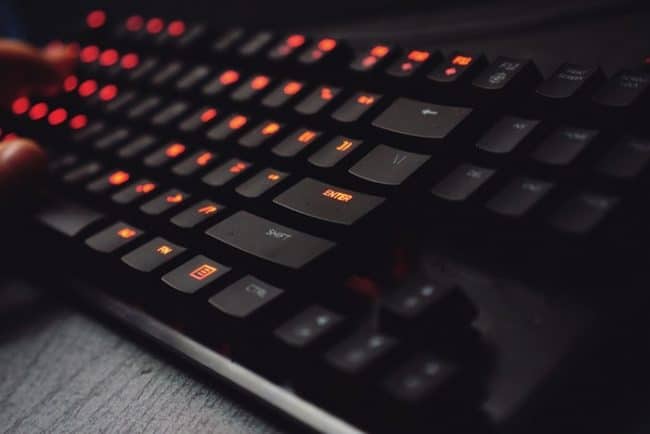
If you’re a regular at the Scan2CAD blog, you’ll know that there are computer mice made especially for use with CAD, much like the 3Dconnexion CADMouse. Interestingly, however, there’s no such thing as a “CAD keyboard”. That is, you won’t find a keyboard that’s been specially optimized for work with CAD.
Of course, that’s not to say that you should use just any old keyboard. If you’re really looking to increase your productivity, you should eschew your old keyboard and invest in one that is more durable, comfortable and suited to your purposes. There’s certainly a variety of advanced, mechanical and gaming keyboards that can be used well in conjunction with CAD drafting and design. While some might be a costly investment, they have the potentially to dramatically improve your working experience.
Factors to consider when buying
Wired vs. wireless

It’s a debate we explored when looking at top CAD mouses. The choice, of course, all depends on how you use your keyboard and what your preferences are.
A lot of CAD users opt for wired keyboards—connected to their workstation via USB—because they don’t have to worry about battery life. It also eliminates the issues of lag or interference. The obvious disadvantage to wired keyboards, however, is the added clutter to the workspace. If you’ve already got dozens of wires on your desk, you hardly want to add another to your collection. It also requires you to have a free USB port to plug it in.
If you’re looking to free up desk space, however, wireless is the way to go. This is especially useful if you tend to require more space when you’re drafting in CAD. That being said, you might have to deal with connectivity issues somewhere along the way—not to mention keeping an eye on battery life. If the thought of your keyboard disconnecting whilst you’re in the middle of drafting has you breaking out in a sweat, perhaps wired is the better option.
Key switches
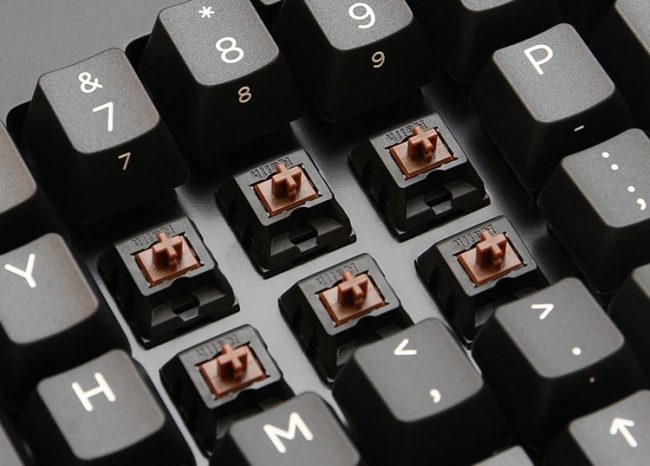
Image source: trulyergonomic
This is a particularly strong factor that many take into consideration when picking their next keyboard. You might not have thought much about the mechanics and components that make up a “simple” keyboard before, but that certainly doesn’t mean you should overlook them now. A key switch is a mechanism inside of a key that determines when you press it. As simple as it might sound, the type of key switches a keyboard has will impact its durability and longevity.
There are three main types of key switches: silicone dome, scissor and mechanical.
Silicone dome switches are the least expensive of all the options. They require you to press the key fully to the bottom in order for them to fully register when you’ve typed. As a result, however, they tend to wear out faster—waning in responsiveness.
Scissor switches have a mechanism that allows for a stable key with a low profile. They’re used in most modern laptops in circulation. A major benefit of these switches is that you don’t have to press the keys down as far, resulting in enhanced durability.
Mechanical switches are far more durable than the other options, and don’t require as much depression. They also tend to be easier to repair. They’re a great option if you’re using your keyboard heavily—for CAD, gaming and much more. There are different mechanical switches on offer, providing different responses and sounds. The most popular types include: MX Red, MX Brown and MX Blue.
- Red: low-noise switches deliver a more linear keypress for rapid-fire actuation
- Brown: low-noise switches that have a tactile bump for feedback with every keypress
- Blue: “clicky” tactile switches that are optimized for rapid command entry
No matter which color you opt for, the keys and mechanisms are much sturdier. This sturdiness comes with a higher price tag, however.
Comfort
If you’re working with CAD, then the odds are that you’re spending hours every day at your workstation. Using traditional keyboards for this length of time can cause a lot of strain, leading to discomfort and prolonged pain. To combat this, you might want to look at an ergonomic keyboard. It’s a comfortable alternative and can increase your productivity. After all, you won’t mind spending as much time at your workstation if you’re not straining as much. Typical features of ergonomic keyboards include a split design layout, cushioned palm rest and an adjustable tilt.
Of course, it’s important that you test out your keyboard as much as you can when you first purchase it. It can take a while to get used to a new design and layout, but if it does end up causing you discomfort, you don’t want to lose all your money because you didn’t realize until after the refund period.
Price
This, of course, is one of the biggest factors to take into consideration when choosing the right keyboard for CAD. While it might be tempting to go for the cheapest option, you’ve got to bear in mind the other factors that come into it. If you pick the cheapest keyboard, then it is unlikely to be durable, and you’ll end up having to replace it again.
Whilst mechanical keyboards might seem a bit too pricey, bear in mind that they come with longevity and durability. Given how much you’re likely to be using your keyboard, it’s worth making an investment. Of course, it does depend entirely on what you’re using CAD for. If you’re a casual hobbyist, it’s probably not worthwhile forking out over $100 for a keyboard. On the other hand, if CAD is your career, then spending that extra dough could be a small price to pay.
If you’re concerned about the prospect of making the wrong decision, then you should definitely take the opportunity to look in store. The ability to give your chosen keyboard a test-drive will help you to make an informed choice. After all, you’ll be spending a lot of time using it—so it needs to be the right fit for you! Buying online, meanwhile, means that you’ll have to wait until you actually receive the model to get a feel for it. (Pro tip: make sure you check the returns policy for anything you buy just in case you need to send it right back!)
The best keyboard for CAD: Our top picks…
Without further ado, let’s look at 5 great options for a keyboard for CAD that will suit a variety of needs.
Perixx Periboard 512
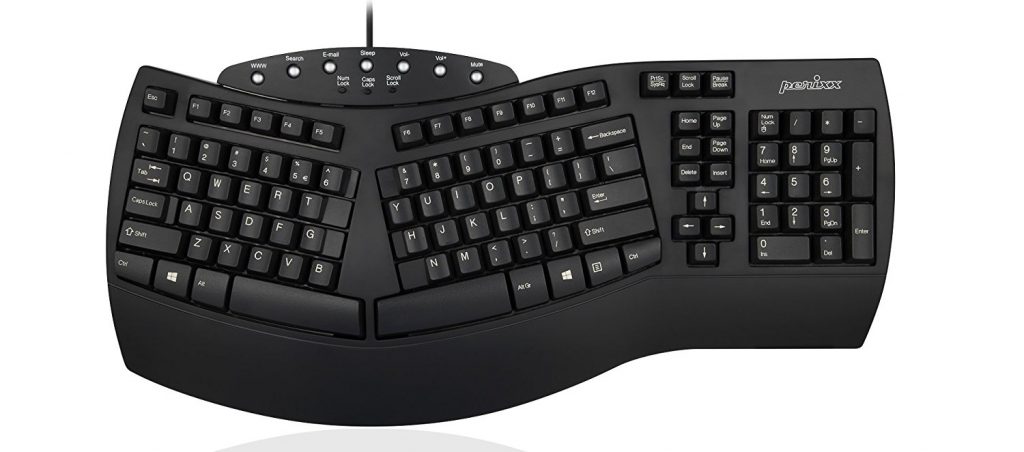
| Dimensions (inches) | 18.92 x 9.2 x 1.72 |
| Weight | 2.28 lbs |
| Hardware connectivity | USB |
| Key switches | Rubber dome switch |
| Price | $39.99 |
| → Check availability on Amazon | |
First on our list is the Periboard ergonomic split keyboard. If you’re working full-time with CAD, you’ll need a keyboard that will provide you the most comfort. That’s where Periboard comes in. Its design allows you to adopt the most relaxed typing posture possible. Its integrated palm rest design supports your wrist fully as you use AutoCAD shortcuts to your heart’s content. Indeed, if you suffer from RSI, this keyboard might be the perfect option for reducing your pain.
The key switches are rubber dome and designed to reduce pressure when you press them. They also allow you to type more comfortably. Perixx have made use of laser printing techniques to ensure that their keys are durable and present higher quality for intensive typing. You’ll find 7 multimedia hotkeys—from open browser and email to mute to sleep mode. Worried about using a USB connected keyboard? It comes with a lengthy 1.8m cable, so you’ve got plenty of stretch, no matter where it’s placed on your desk.
CAD can be an incredibly laborious process, especially if you’re working on a project for hours on end. If this sounds even remotely familiar, you should invest in a keyboard that will help you work comfortably. And for $39.99, it’s certainly worth it!
Logitech G610 Orion Brown (also available in Red)
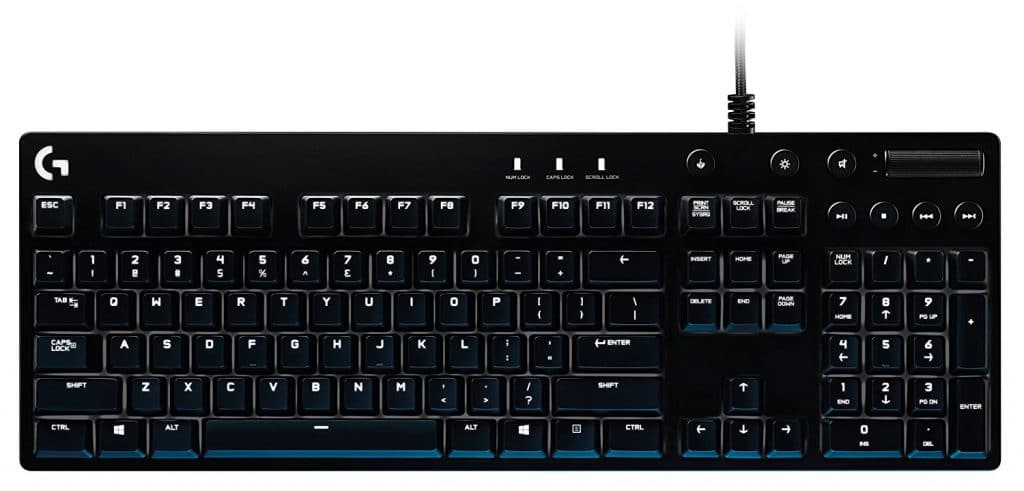
| Dimensions (inches) | 17.5 x 6 x 1.4 |
| Weight | 2.6 lbs |
| Hardware connectivity | USB |
| Key switches | Cherry MX Brown or Red |
| Programmable keys | 12 function keys |
| Multi-key inputs with anti-ghosting | 104 |
| Price | $84.00 |
| → Check availability on Amazon | |
Next on our list brings us into the realm of mechanical keyboards. Logitech G610 Orion Brown is designed for gamers and people who are putting their keyboard through some serious work. If you’re working in the CAD industry full-time, you definitely can’t go wrong with an Orion keyboard.
To start, the keyboard comes with long-life Cherry MX switches that will take your drafting to the next level. You can enjoy Cherry MX Brown or Red, depending on your preferences. Brown switches are made for low-noise—meaning you don’t have to worry about annoying your office neighbors! They can withstand over 50 million keystrokes and actuate with precision for a reliable gaming or CAD experience. If you tend to work late into the night, you might be interested in the customizable lighting feature—letting you personalize each individual key light.
At $84.00, it’s not the priciest option out there, and it’s more than worth the money. Cherry MX keys are extremely durable, so you don’t have to worry about having to replace it.
Logitech G710+
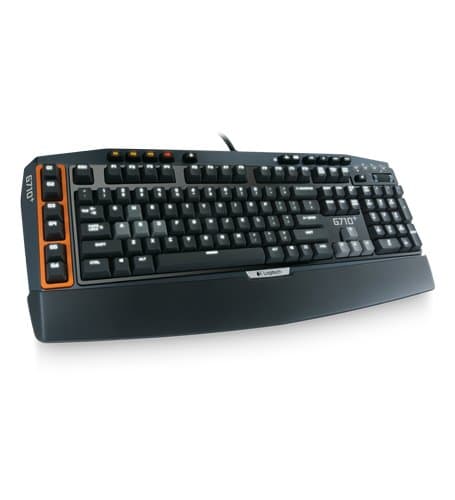
| Dimensions (inches) | 20.7 x 9 x 2.4 |
| Weight | 4.8 lbs |
| Hardware connectivity | USB |
| Key switches | Cherry MX Brown |
| Programmable keys | 6 G-keys |
| Multi-key inputs with anti-ghosting | 110 |
| Price | $96.93 |
| → Check availability on Amazon | |
Another great option from Logitech, the G710+ is a bit pricier than the 610, and it certainly packs a punch! If you’re looking for flawless precision and high performance, it’s the perfect option.
Feeling self-conscious about typing too loudly in the office? Then the G710 was built for you. Its tactile, high-speed keys deliver ultimate responsiveness and feedback—without the noise distraction. And with an actuation force and distance of 45g and 2mm, the keys are perfectly optimized for rapid typing. So, you don’t have to worry about lag or mistyping your CAD shortcut keys. Much like the 610, you can customize the backlighting so that you can work comfortably even in low light. With 6 programmable G-keys, 110 anti-ghosting keys and 26-key rollover, every move is made with precision.
Wondering just how durable the G710+ is? Logitech carried out its own study. And, what do you know—even a 16 ton tank destroyer struggled! Needless to say, for $96.93, it’s quite the steal!
Das Keyboard Model S Professional
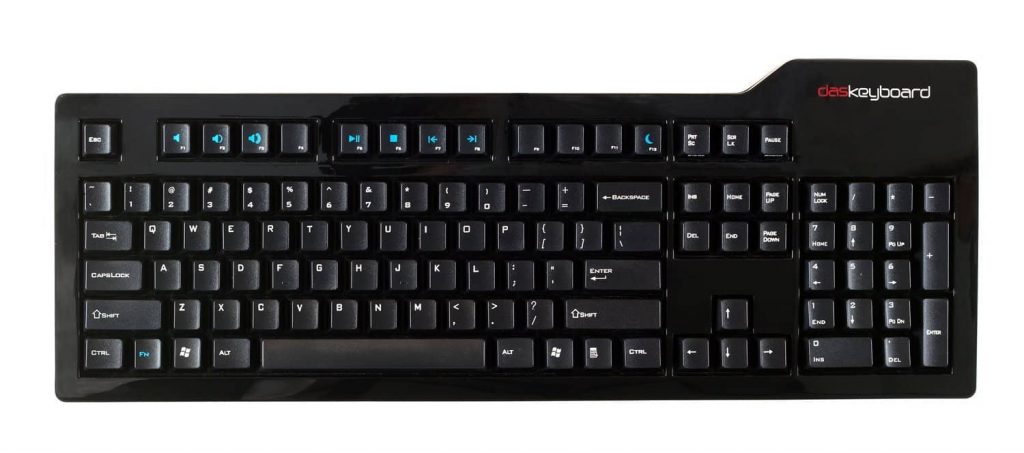
| Dimensions (inches) | 18 x 6.5 x 1.5 |
| Weight | 3 lbs |
| Hardware connectivity | USB |
| Key switches | Cherry MX Brown Cherry MX Blue |
| Switch lifespan | 50 million+ |
| Price | $108.73 (Brown) $112.99 (Blue) |
| → Check availability on Amazon | |
Our penultimate choice is the high performing Model S Professional from Das Keyboard. Made from the highest-quality materials, Model S lets you experience faster typing that you ever dreamed. If you’re tired of putting your fingers through the ringer, this might be the perfect solution.
You can purchase Model S in either MX Brown or MX Blue. If you prefer quiet typing, Brown is the way to go. If, on the other hand, you prefer the trademark clicky tactile feedback, Blue is the obvious choice. No matter which one you choose, your typing experience is assured to be comfortable, precise and fast. Additionally, this keyboard comes with gold-plated switches, assuring you of a long lifespan. Model S also allows full N-key rollover—great for typists and gamers both.
If you’re a sucker for backlighting, however, you’ll be disappointed—you’ll have to look elsewhere. Depending on your chosen key switch—Brown or Blue—the price will vary from $108.73 to $122.99.
Logitech G910 Orion Spectrum RGB

| Dimensions (inches) | 20.5 x 9.9 x 1.6 |
| Weight | 4.35 lbs |
| Hardware connectivity | USB |
| Key switches | Romer-G mechanical |
| Programmable keys | 9 G-keys |
| Price | $119.99 |
| → Check availability on Amazon | |
We round off our list with the most expensive on our list: Logitech’s G910 Orion Spectrum RGB keyboard. While it is a mechanical keyboard, like the others on our list, it stands on an entirely different level. In fact, it cites itself as the “world’s fastest RGB mechanical gaming keyboard”, so it’s safe to say, it has a lot going on.
You won’t find Cherry MX key switches on this keyboard. Instead, you’ll get Romer-G mechanical switches with up to 25% faster actuation. And, of course, the much-loved customizable RGB illumination. With it, you can personalize individual key lighting from a palette of over 16 million colors! If that wasn’t enough, there are 9 programmable G-keys to help you execute complex commands with lightning speed. And with an Arx control app and smartphone dock, you can even connect your smartphone or tablet!
In a room filled with CAD drafters, designers and engineers, you’re sure to stand out with your rainbow-rippling keyboard. As a keyboard that packs style, substance and durability, $119.99 seems pretty worthwhile.
Compared: The best keyboard for CAD
We hope that by this point, you’ll have narrowed down your choices for your next CAD keyboard. No matter which one you choose, however, it’s important that you look at comfort, functionality and durability. As a CAD user, you’re going to be putting your keyboard under a lot of strain, so you need a purchase that’s worth the investment.
Still not sure whether a mechanical keyboard is for you? Wondering if Cherry MX Brown or Blue is the right fit? If you can, head in-store and try out as many keyboards as you can. Once you’ve got an idea of what you like, you can make a more informed decision.

